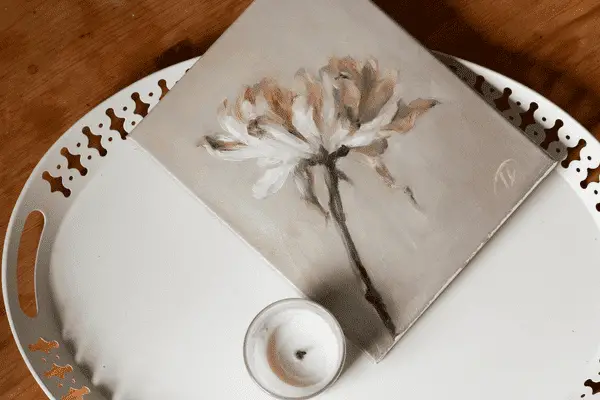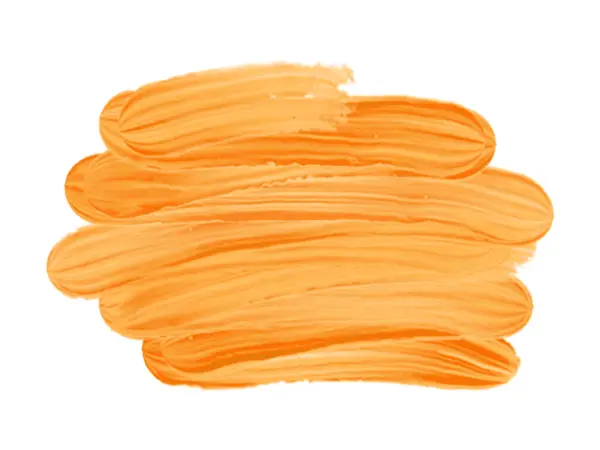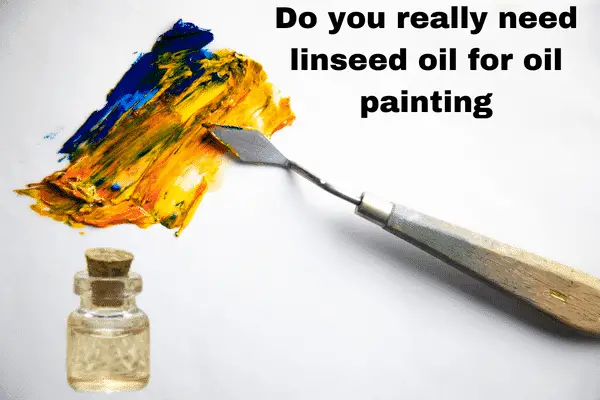Oil painting is a great hobby and as well as a skill of art. It is also among the most popular painting techniques that ancient as well as modern artist use in painting.
If you are familiar with oil painting you must observe that mediums play a beneficial role in creating a good piece of art. You can boost the quality of your painting just by using suitable mediums.
“So, do you really need linseed oil for oil painting? Yes, you really need linseed oil for oil painting because it is the most preferred medium for oil painting. It is used in making oil paints, boosting consistency, cleaning equipment, and many other purposes”
Linseed oil actually extracts from the seeds of the linseed plant. It is a purely natural substance which not just used in oil painting but also use in concrete, wood, soap, ink, and so many other things. In oil painting, it acts as an important oil medium to boost attraction.
Table of Contents
- what is linseed oil used for in oil painting?
- Method to use linseed oil in oil painting
- Things to know before using linseed oil in oil painting
- Advantages of linseed oil
- Disadvantages of linseed oil
- Linseed oil paint recipe
- safflower oil vs linseed oil – which one is better
- Conclusion
- FAQs
Do you know! Linseed oil has been used in painting since the 12th century. Artists make different pigments by the use of linseed oil which further transforms the modern world.
what is linseed oil used for in oil painting?
Oily pigments are the main reasons which create a difference between oil paintings and other paintings. So, linseed oil act as a pigment enhancer which boosts the oily pigment to create a more richer and consistent paint. It also has an important role in cleaning the paint brushes from getting dirty.
There is a thing to notice, the use of this medium will boost the attraction of your painting but it will take so much time to get dry. We also have given ways to boost up the slow drying time.

Method to use linseed oil in oil painting
This is so much important to have a look properly at the reaction of linseed oil with paint. To use linseed oil properly, we recommend the following steps:
- Take only a few drops of linseed oil in a small vessel or cap of a bottle
- Put your paint in a separate place
- Dip the tip of the brush in oil. Try to avoid so much quantity on the surface of the brush. We recommend adding only a little amount because it could make your pigments so much lighter or yellow.
- Mix the oil in the paint by separating the layer of paint.
- Now your paint is ready to fill in paintings
Things to know before using linseed oil in oil painting
You must have to aware of three major things before using linseed oil
1. Increase in oil content
Oil is actually a non-chemical substance. As the paints use in oil paintings contain a layer of oil which is the reason for the shiny surface of your paintings.
The addition of linseed oil will add an extra amount of oily layer resulting in the thinning of oil paints.
2. Decrease in drying time
The drying time of oil is very slow. It is a general concept that the addition of more oil paint will slow drying time also. Actually, oil does not go through the evaporation process like water. Oil is thick as compared to water which will consume more time in evaporation and hence result will be more drying time.
3. Small cracks in the painting
After drying, there could be a hairline-shaped crack on the surface which will take the natural glow and attraction of the painting. Linseed oil prevents your oil paintings to crack later. That’s the reason, we recommend using linseed oil properly.

Advantages of linseed oil
- The use of linseed oil increases the life span of oil painting
- It is totally natural
- It is free from any kind of allergies
- It will prevent the merging of layers which balances the texture and properly highlight the painted area
- It helps to remove unwanted paint to clean dirty brushes
- Only a few drops are enough to work on a whole painting
- It could be easily useable on already painted surfaces

Disadvantages of linseed oil
- The surface of the paint gets yellowish if it is applied in a greater quantity
- It slows down the process of drying of painting
- Cracks may appear after some time if the bad quality of used
- Be aware of additives that come with linseed oil. Prefer pure form

Linseed oil paint recipe
Take a bowl and add some drops of linseed oil. You can add Turpentine oil also to enhance the quality. Take your desired pigment and slightly touch your brush with the oil mixture and then mix in pigment until the desired consistency. The use of only linseed oil can take up to 7 days to dry. The addition of Turpentine oil can take up to 4 days. Avoid using too much oil because it will cause disadvantages as written above.
safflower oil vs linseed oil – which one is better
| Linseed oil | Safflower oil |
| Relatively fast drying rate than safflower oil | Slower drying time |
| It is not that viscous | Viscous |
| Greater benefits | lower benefits |
| More yellow surface | Less yellowing |
| Relatively stable | Moisture sensitive |
| Have many compliments | Can only add with linseed |
Conclusion
You definitely need linseed oil for a better experience of pigments. It is also a cause of the increasing life span of painting. But there is a need for proper study and awareness about the results of using excess linseed oil that can ruin all your hard work in yellow form. For better results, it can be used by mixing in other oils like safflower, turpentine, liquid, etc. The drying procedure is slow in linseed oil which can be up to 1 week. Make thin layers of paint and let the first layer dry properly to avoid intermixing pigments each other.
We will appreciate any questions regarding the use of linseed oil. Help others to ask questions in the comment section. We will add them in the FAQs section.
FAQs
Why do artists use linseed oil in their oil paintings?
Artists frequently use it because it is a great pigment enhancer, medium, and painting preserver. It is also the most popular and ancient medium of oil painting.
Can I store my linseed oil in a plastic bottle or only in glass jars?
Artists usually do not care so much about keeping it. You could store it in the same jar it comes in. I have seen it in a plastic bottle but their layer is so much thick. We recommend using it in a glass bottle.
If you have any questions, you can contact us. If you are a beginner then check our guide to oil painting for beginners.
